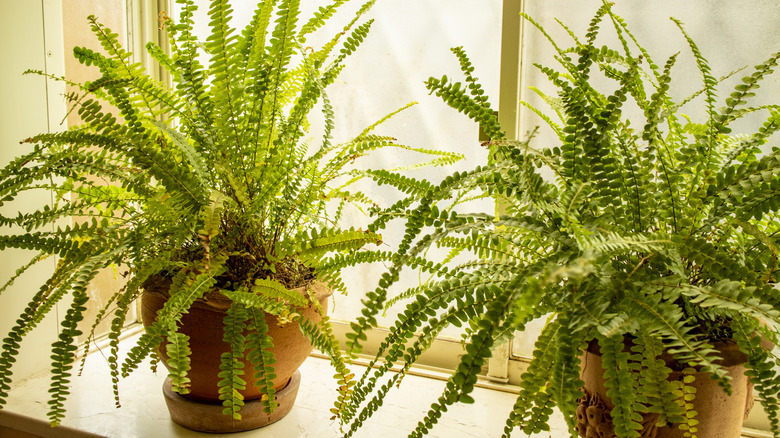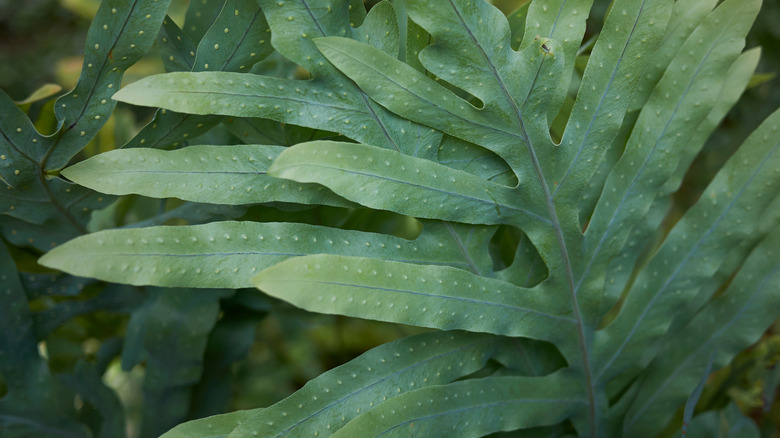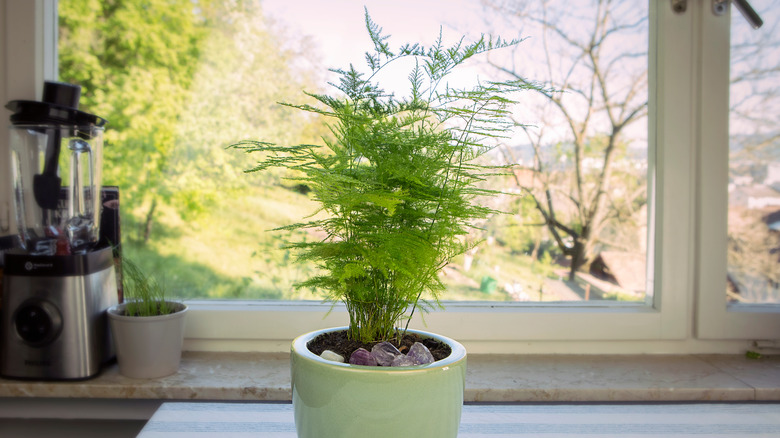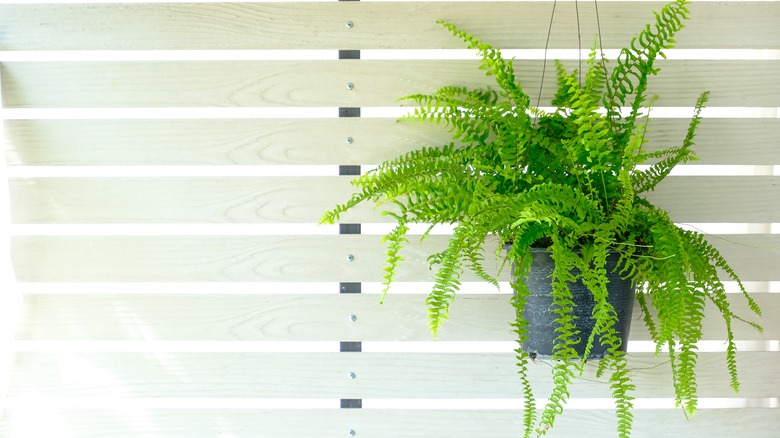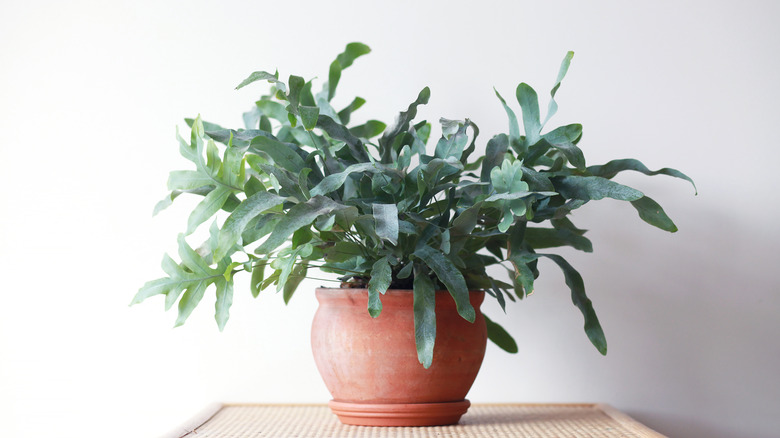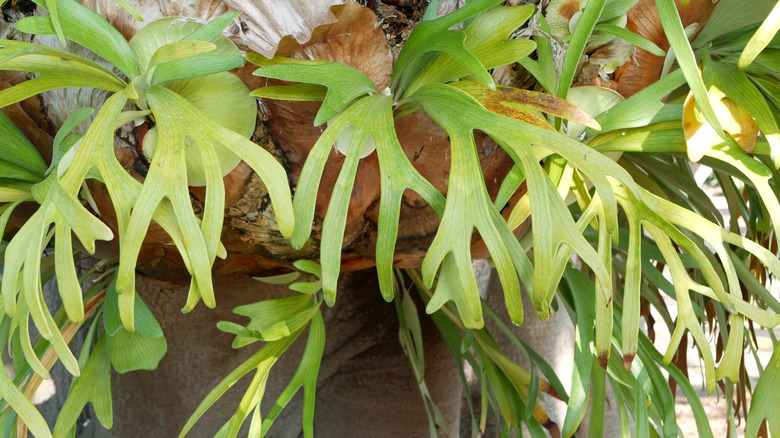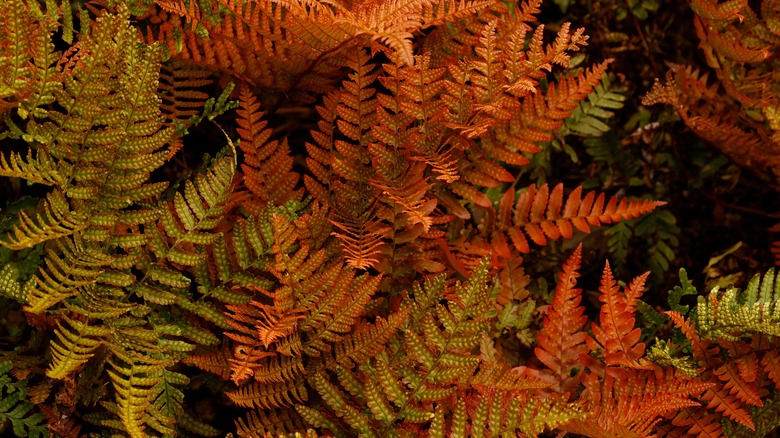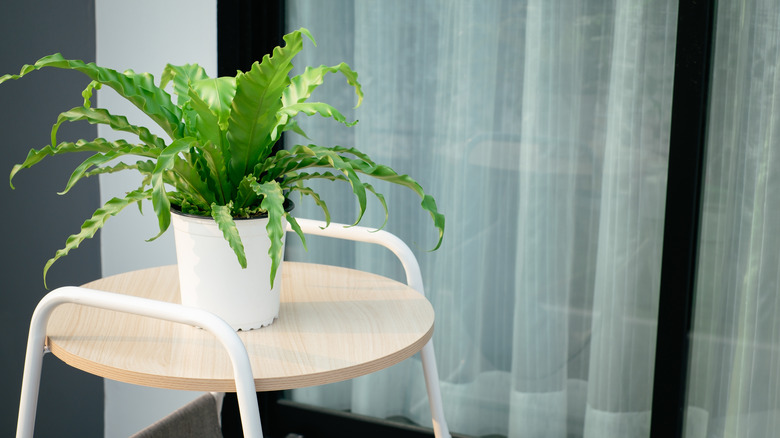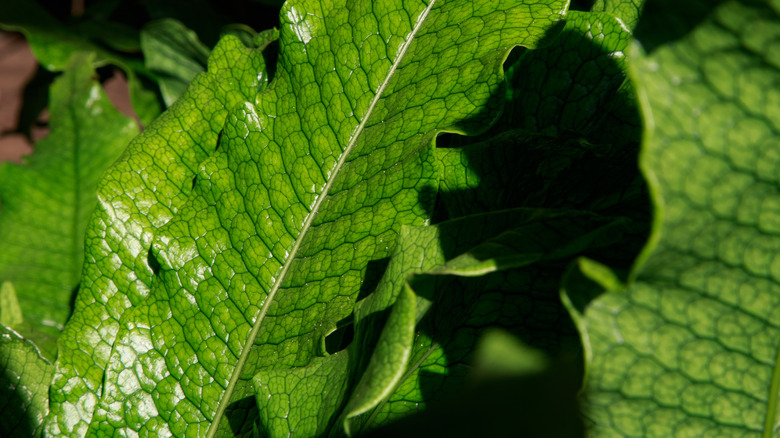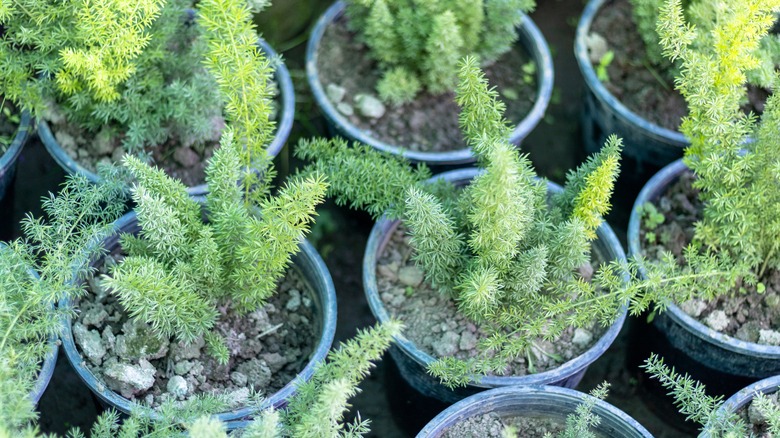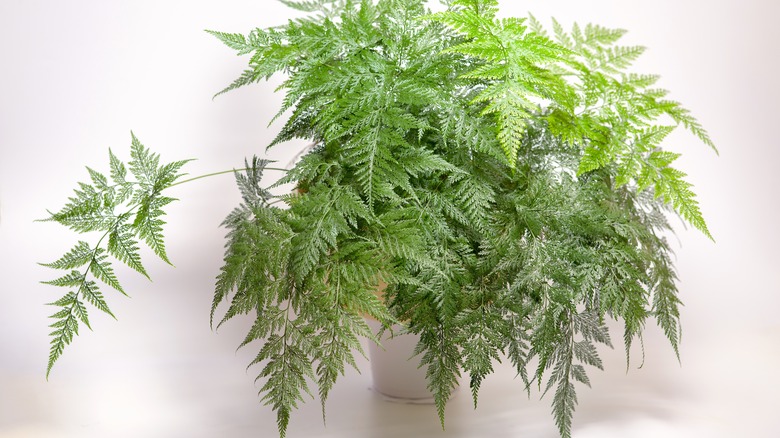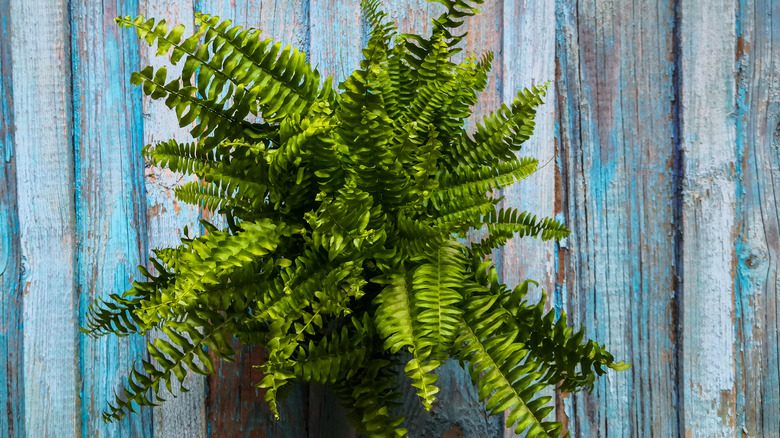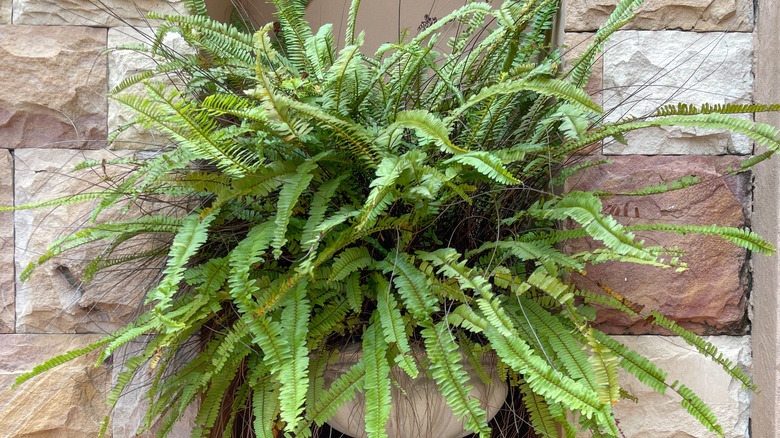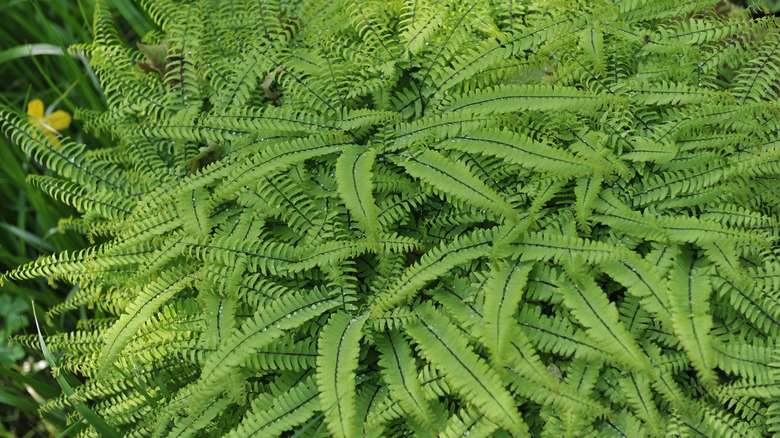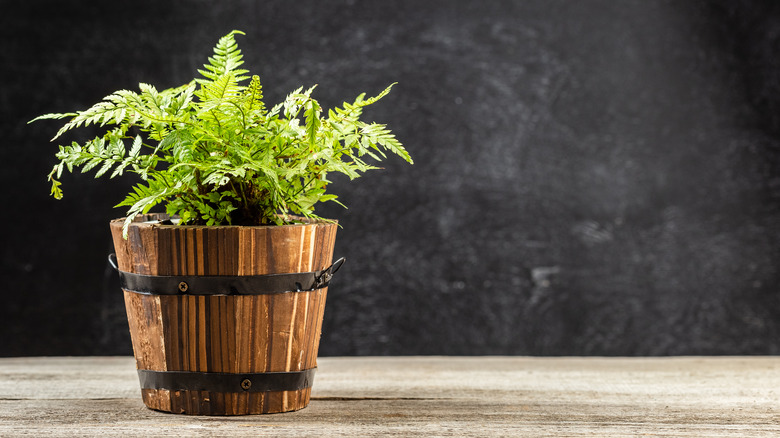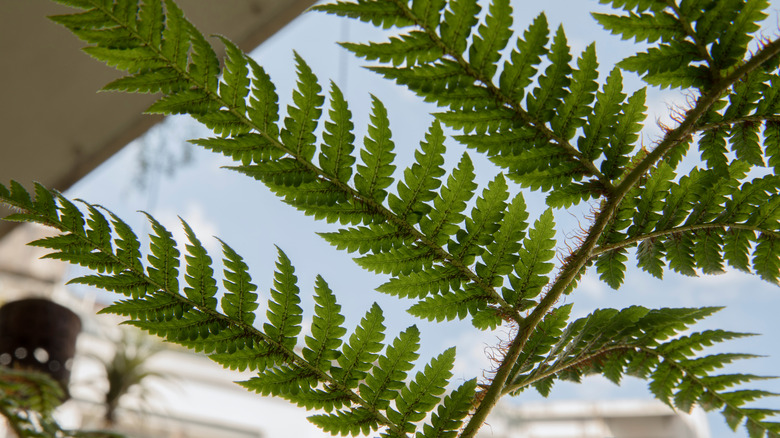15 Ferns That Could Make The Perfect Houseplant
Ferns are frequently pushed aside to make room for other, more traditional houseplants. Moreover, some home gardeners shy away from the idea of growing ferns indoors due to their love of humidity, warm temperatures, moist to wet soil, and other fussy maintenance needs. Still, with scheduled care, many plants in the fern family can add great interest to your houseplant collection and provide lush greenery to the shadiest areas of your home.
Many ferns in this list show off vastly different growth habits, foliage textures, and colors, despite having extremely similar needs. Lots of fern species will let you know if they are unhappy, as their fronds droop, leaves yellow, or growth becomes irregular. With an attentive eye, however, even beginner gardeners should be able to keep their ferns alive for many years. Here is our selection of ferns that can be grown as houseplants, giving your home garden some new color and life.
1. Kangaroo fern
The kangaroo fern (Zealandia pustulata) grows naturally in New Zealand showing off leathery green leaves that often feature wavy lobes. This unique plant can make a wonderful houseplant as long as you provide it with the right conditions. It will grow happily in a hanging basket or a large container situated in bright indirect sunlight. As it matures, the kangaroo fern will become even easier to care for. The species is somewhat tolerant of drought and nearly disease and pest free.
2. Asparagus fern
The asparagus fern (Asparagus setaceus) is an award-winning houseplant with amazingly fine and gorgeous foliage. You can recognize it from its light green color and tiny needle-like leaves. The plant prefers bright indirect light and well-draining potting soil. Be certain that you are providing yours with adequate humidity and regular watering during its growing season. The asparagus fern might need to be placed on top of a tray filled with water and pebbles if the air in your home is too dry.
3. Boston fern
Boston ferns (Nephrolepis exaltata 'Bostoniensis') are well-known houseplants that are frequently chosen for their wide and arching fronds, covered in triangular-shaped light green leaves. This fern, which grows in warm climates with high humidity, can be a good houseplant option in colder areas. Indoors, you'll want to keep this fern in rich and moist soil and in an area that will provide it with bright to medium indirect light. Boston ferns will grow poorly if they are not receiving enough humidity. Be sure to set up a humidifier or spray it with water regularly.
4. Cabbage palm fern
The cabbage palm fern (Phlebodium aureum) is also sometimes called the golden polypody, the gold foot fern, or the hare foot fern. The reference to feet in some of these names refers to the plant's hairy and golden roots that look like fuzzy rabbits' feet. In an indoor setting, the fern will grow with a creeping habit, crawling over a table or shelf and cascading over the edge. It prefers shadier locations, so it will happily thrive in a darker corner of your home.
5. Staghorn fern
Named after its fronds which look similar to the antlers of male deer, staghorn ferns (Platycerium bifurcatum) are epiphytic ferns that make wonderful houseplants. Many indoor gardeners choose to grow theirs from a mounted piece of wood hanging on their wall. However, if you prefer to keep yours in a container, that's just fine too. For the best growth, your staghorn fern will need good air circulation, plenty of moisture, and some humidity as well as bright indirect light.
6. Autumn fern
Autumn ferns (Dryopteris erythrosora), also referred to as Japanese shield ferns, are well-known for their color-changing and arching fronds that shift from orange to pink to green as the seasons change. They are easy to grow as a houseplant given they enjoy consistently moist soil and very little light. This shade-loving fern will grow slowly and it doesn't flower, so caring for it takes almost no effort besides some regular watering.
7. Bird's nest fern
The bird's nest fern (Asplenium nidus) is a popular houseplant choice because of its strap-like and bright green fronds. The plant's leaves can become more than 4 feet long in adulthood but typically stay smaller than 2 feet long when grown indoors. Keep this epiphytic fern away from bright windows. It prefers shady locations that mimic its natural environment where they grow on trees in the rainforests of Hawaii, Asia, Australia, and Polynesia. Because of the plant's love for tropical environments, it also requires warm temperatures and moist soil to grow.
8. Crocodile fern
Crocodile ferns (Microsorum musifolium) are another member of the fern family that boasts long and wide leathery foliage. Its leaves are covered in a scale-like texture that gives the fern its common name. The crocodile skin texture of the fronds is highly ornamental and a great conversation starter. As a houseplant, the tropical fern does well when container-grown in a shady location with high humidity. Keep its soil moist and fertilize it monthly for the best growth.
9. Sprengeri fern
The Sprengeri fern (Asparagus densiflorus, Sprengeri group) is sometimes confused with the asparagus fern because they share a common name. The two ferns do have similar growth requirements and needle-like leaves, however, Sprengeri ferns feature a bushier habit, white flowers, and bright red berries. Growing the species indoors as a houseplant is best because it is reportedly invasive in many parts of the United States and Australia.
10. Rabbit's foot fern
The rabbit's foot fern (Davallia fejeensis), has fuzzy surface rhizomes that creep over the sides of its container and cascade downward. Its foliage is different, however, and shows off bright evergreen fronds covered with tiny dense leaves. Unlike many of the other ferns in this collection, the rabbit's foot fern can survive in drier conditions. Still, it should be watered regularly and misted when you find the time. Keep it out of direct sunlight, but make sure that temperatures in your home, or around your plant, are above 55 degrees Fahrenheit.
11. Kupukupu fern
Kupukupu ferns (Nephrolepis cordifolia) are native to Hawaii and are commonly referred to as fishbone ferns or sword ferns. Typically, they are grown in warm and tropical areas, but you can bring them indoors to be grown as a houseplant as well. They do well in containers and enjoy moist or wet soil as well as bright indirect light.
12. Kimberly queen fern
The Kimberly queen fern (Nephrolepis obliterata) is an Australian species that is described as adaptable and suitable for indoor growing. Though the plant is quite large, reaching 3 feet tall and wide in some instances, it can be kept smaller when grown in a container. The Kimberly queen fern can grow in a large pot or hanging basket to show off its beautiful green fronds. As a houseplant, the fern should be provided with frequent water and bright, indirect sunlight.
13. Maidenhair fern
Maidenhair ferns (Adiantum pedatum) are not strangers to being grown indoors. Along with the Boston fern, this one is likely one of the most-used houseplant ferns. People enjoy growing the maidenhair fern in containers that allow the fan-like foliage to arch over the sides. It can be grown almost anywhere in your house that will shade it from direct sunlight. The easy-to-grow plant is tolerant of drought and neglect, but it will grow better when its soil is kept damp throughout the growing season.
14. Lady fern
The lady fern (Athyrium filix-femina) is another easy-to-grow plant with many tiny leaves on arching branches. Hardy to USDA growing zone 3, it can be raised outdoors in many areas as well as indoors. The fern rarely reaches taller than 2 feet, so it will fit comfortably in a medium to large pot in your home. When grown in consistently moist soil and indirect light, the lady fern will rapidly increase in size, so it will likely need to be divided and repotted every couple of years.
15. Australian tree fern
The Australian tree fern (Sphaeropteris cooperi) is known for its extreme growth of up to 50 feet tall with 20-foot-long fronds. Don't let its massive size discourage you though, when grown as a houseplant its growth can be controlled. The tree fern produces a single trunk that forms finely textured leaves at its top. It has the most attractive growth when it is shaded from direct sunlight and given lots of regular watering. The soil should be fertile and well-drained to keep it healthy.
